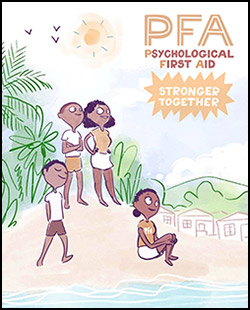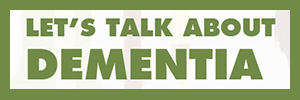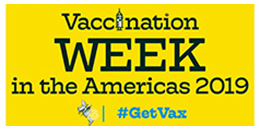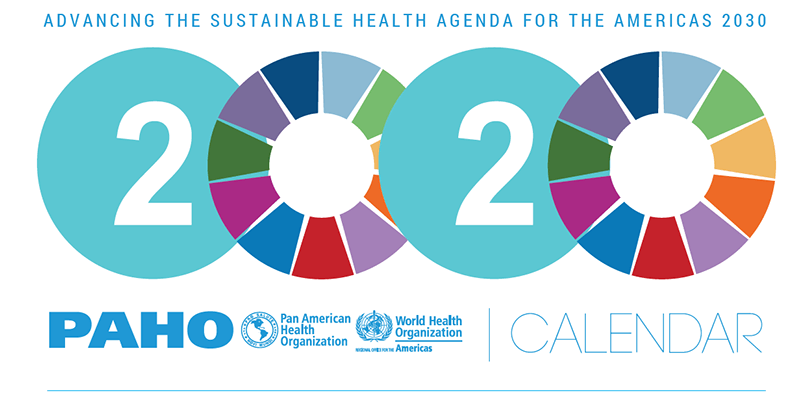Tuberculosis and COVID-19: What health workers and authorities need to know
COVID-19: Considerations for Toggle navigation
Tuberculosis and COVID-19: What health workers and authorities need to know
COVID-19: Considerations for tuberculosis (TB) care services
As the world comes together to tackle the COVID-19 pandemic, it is important to ensure that essential services and operations for dealing with long-standing health problems continue to protect the lives of people with TB and other diseases or health conditions. Health services, including national programmes to combat TB, need to be actively engaged in ensuring an effective and rapid response to COVID-19.
The World Health Organization (WHO) is advising Member States that are leading the response to the unfolding COVID-19 pandemic. The WHO Global TB Programme along with WHO regional and country offices, has developed an information note, in collaboration with stakeholders. This note is intended to assist national TB programmes and health personnel with ensuring continuity of essential services for people affected with TB during the COVID-19 pandemic, driven by innovative people-centred approaches, as well as maximizing joint support to tackle both diseases.
All measures should be implemented to prevent any stigmatization or discrimination of people affected by either of these conditions, through respect for their confidentiality and protection of their human rights, among other actions.
1. Are people with TB likely to be at increased risk of COVID-19 infection, illness and death?
People ill with COVID-19 and TB show similar symptoms such as cough, fever and difficulty breathing. Both diseases attack primarily the lungs and although both biological agents transmit mainly via close contacts, the incubation period from exposure to disease in TB is longer, with often a slow onset.
While experience on COVID-19 infection in TB patients remains limited, it is anticipated that people ill with both TB and COVID-19 may have poorer treatment outcomes, especially if TB treatment is interrupted.
TB patients should take precautions as advised by health authorities to be protected from COVID-19 and continue their treatment as prescribed.
2. What should health authorities do to provide sustainability of essential TB services during the COVID-19 pandemic? What services can be leveraged across both diseases?
Health authorities should maintain support to essential TB services, including during emergencies such as COVID-19. People-centred delivery of TB prevention, diagnosis, treatment and care services should be ensured, in tandem with the COVID-19 response.
Prevention: Measures must be put in place to limit transmission of TB and COVID-19 in congregate settings, and health care facilities, as per WHO Guidelines. Although modes of transmission of the two diseases are slightly different, administrative and personal protection measures apply to both (e.g. basic infection prevention and control, cough etiquette, segregation of people suspected to be affected).
Provision of TB preventive treatment should be maintained as much as possible as its benefit for patients and the TB epidemic is likely to reduce any potential negative impact of the Covid-19 pandemic.
Diagnosis: Accurate diagnostic tests are essential for both TB and COVID-19. Tests for the two conditions are different and both should be made available for individuals with respiratory symptoms, which may be similar for the two diseases.
TB laboratory networks have been built in countries with the support of WHO and international partners. These networks as well as specimen transportation mechanisms could also be used for COVID 19 diagnosis and surveillance.
Treatment and care: TB programme staff with their experience and capacity, including in active case finding and contact tracing, are well placed to share knowledge, expertise, and to provide technical and logistical support.
Provision of anti-tuberculosis treatment, in line with the latest WHO guidelines, must be ensured for all TB patients, including those in COVID-19 quarantine and those with confirmed infection.
Patient-centred outpatient and community-based care should be strongly preferred over hospital treatment for TB patients (unless serious conditions are requiring hospitalisation) to reduce opportunities for transmission.
Use of digital health technologies should be intensified to support patients and programmes through improved communication, counselling, care, and information management, among other benefits.
Proactive planning, procurement, supply and risk management: Appropriate planning and monitoring are essential to ensure that procurement and supply of TB medicines and diagnostics are not interrupted. WHO is monitoring medicine supply at the global level, while The Global Fund, the Stop TB Partnership Global Drug Facility (GDF), USAID, Unitaid and other donors play an essential role in supporting countries to secure an adequate and sustainable supply of TB medicines drugs and diagnostics. Countries are advised to place their orders for 2020 delivery at soon as possible given expected delays in transport and delivery mechanisms.
Human resources: Respiratory physicians, pulmonology staff of all grades, TB specialists and health workers at the primary health care level may be points of reference for patients with pulmonary complications of COVID -19. They should familiarize themselves with WHO recommendations for the supportive treatment and containment of COVID-19. Detection and effective supportive treatment may reduce morbidity and mortality from both COVID-19 infection and most forms of TB.
Capacity building: Response to Covid-19 can benefit from the capacity building efforts for infection control, contact tracing, house-hold and community-based care, along with surveillance and monitoring systems that have been developed for TB over many years of investment by national authorities and donors.
Uniting forces to prevent transmission and save lives
The TB community with its network of national programmes, partners and civil society stand in solidarity with those battling COVID-19. Many agencies and donors supporting the TB response worldwide such as the Global Fund, US Agency for International Development, UNITAID, Stop TB Partnership and The Union, among others offered their support to those affected by the COVID-19 crisis.
WHO is working with countries, partners and civil society to compile and exchange best practices and experiences as they become available at various stages of the COVID-19 epidemic. This will include information on TB services impacted and measures taken throughout this difficult period.
Please stay in touch with the WHO Global TB Programme on TB and COVID-19 related issues and share your experiences with us.
Email: gtbprogramme@who.int
References
Brooks SK, Webster RK, Smith LE, Woodland L, Wessely S, Greenberg N, et al. The psychological impact of quarantine and how to reduce it: rapid review of the evidence. The Lancet. 2020 Mar;395(10227):912–20.
(TB) care services
As the world comes together to tackle the COVID-19 pandemic, it is important to ensure that essential services and operations for dealing with long-standing health problems continue to protect the lives of people with TB and other diseases or health conditions. Health services, including national programmes to combat TB, need to be actively engaged in ensuring an effective and rapid response to COVID-19.
The World Health Organization (WHO) is advising Member States that are leading the response to the unfolding COVID-19 pandemic. The WHO Global TB Programme along with WHO regional and country offices, has developed an information note, in collaboration with stakeholders. This note is intended to assist national TB programmes and health personnel with ensuring continuity of essential services for people affected with TB during the COVID-19 pandemic, driven by innovative people-centred approaches, as well as maximizing joint support to tackle both diseases.
All measures should be implemented to prevent any stigmatization or discrimination of people affected by either of these conditions, through respect for their confidentiality and protection of their human rights, among other actions.
1. Are people with TB likely to be at increased risk of COVID-19 infection, illness and death?
People ill with COVID-19 and TB show similar symptoms such as cough, fever and difficulty breathing. Both diseases attack primarily the lungs and although both biological agents transmit mainly via close contacts, the incubation period from exposure to disease in TB is longer, with often a slow onset.
While experience on COVID-19 infection in TB patients remains limited, it is anticipated that people ill with both TB and COVID-19 may have poorer treatment outcomes, especially if TB treatment is interrupted.
TB patients should take precautions as advised by health authorities to be protected from COVID-19 and continue their treatment as prescribed.
2. What should health authorities do to provide sustainability of essential TB services during the COVID-19 pandemic? What services can be leveraged across both diseases?
Health authorities should maintain support to essential TB services, including during emergencies such as COVID-19. People-centred delivery of TB prevention, diagnosis, treatment and care services should be ensured, in tandem with the COVID-19 response.
Prevention: Measures must be put in place to limit transmission of TB and COVID-19 in congregate settings, and health care facilities, as per WHO Guidelines. Although modes of transmission of the two diseases are slightly different, administrative and personal protection measures apply to both (e.g. basic infection prevention and control, cough etiquette, segregation of people suspected to be affected).
Provision of TB preventive treatment should be maintained as much as possible as its benefit for patients and the TB epidemic is likely to reduce any potential negative impact of the Covid-19 pandemic.
Diagnosis: Accurate diagnostic tests are essential for both TB and COVID-19. Tests for the two conditions are different and both should be made available for individuals with respiratory symptoms, which may be similar for the two diseases.
TB laboratory networks have been built in countries with the support of WHO and international partners. These networks as well as specimen transportation mechanisms could also be used for COVID 19 diagnosis and surveillance.
Treatment and care: TB programme staff with their experience and capacity, including in active case finding and contact tracing, are well placed to share knowledge, expertise, and to provide technical and logistical support.
Provision of anti-tuberculosis treatment, in line with the latest WHO guidelines, must be ensured for all TB patients, including those in COVID-19 quarantine and those with confirmed infection.
Patient-centred outpatient and community-based care should be strongly preferred over hospital treatment for TB patients (unless serious conditions are requiring hospitalisation) to reduce opportunities for transmission.
Use of digital health technologies should be intensified to support patients and programmes through improved communication, counselling, care, and information management, among other benefits.
Proactive planning, procurement, supply and risk management: Appropriate planning and monitoring are essential to ensure that procurement and supply of TB medicines and diagnostics are not interrupted. WHO is monitoring medicine supply at the global level, while The Global Fund, the Stop TB Partnership Global Drug Facility (GDF), USAID, Unitaid and other donors play an essential role in supporting countries to secure an adequate and sustainable supply of TB medicines drugs and diagnostics. Countries are advised to place their orders for 2020 delivery at soon as possible given expected delays in transport and delivery mechanisms.
Human resources: Respiratory physicians, pulmonology staff of all grades, TB specialists and health workers at the primary health care level may be points of reference for patients with pulmonary complications of COVID -19. They should familiarize themselves with WHO recommendations for the supportive treatment and containment of COVID-19. Detection and effective supportive treatment may reduce morbidity and mortality from both COVID-19 infection and most forms of TB.
Capacity building: Response to Covid-19 can benefit from the capacity building efforts for infection control, contact tracing, house-hold and community-based care, along with surveillance and monitoring systems that have been developed for TB over many years of investment by national authorities and donors.
Uniting forces to prevent transmission and save lives
The TB community with its network of national programmes, partners and civil society stand in solidarity with those battling COVID-19. Many agencies and donors supporting the TB response worldwide such as the Global Fund, US Agency for International Development, UNITAID, Stop TB Partnership and The Union, among others offered their support to those affected by the COVID-19 crisis.
WHO is working with countries, partners and civil society to compile and exchange best practices and experiences as they become available at various stages of the COVID-19 epidemic. This will include information on TB services impacted and measures taken throughout this difficult period.
Please stay in touch with the WHO Global TB Programme on TB and COVID-19 related issues and share your experiences with us.
Email: gtbprogramme@who.int
References
Brooks SK, Webster RK, Smith LE, Woodland L, Wessely S, Greenberg N, et al. The psychological impact of quarantine and how to reduce it: rapid review of the evidence. The Lancet. 2020 Mar;395(10227):912–20.







